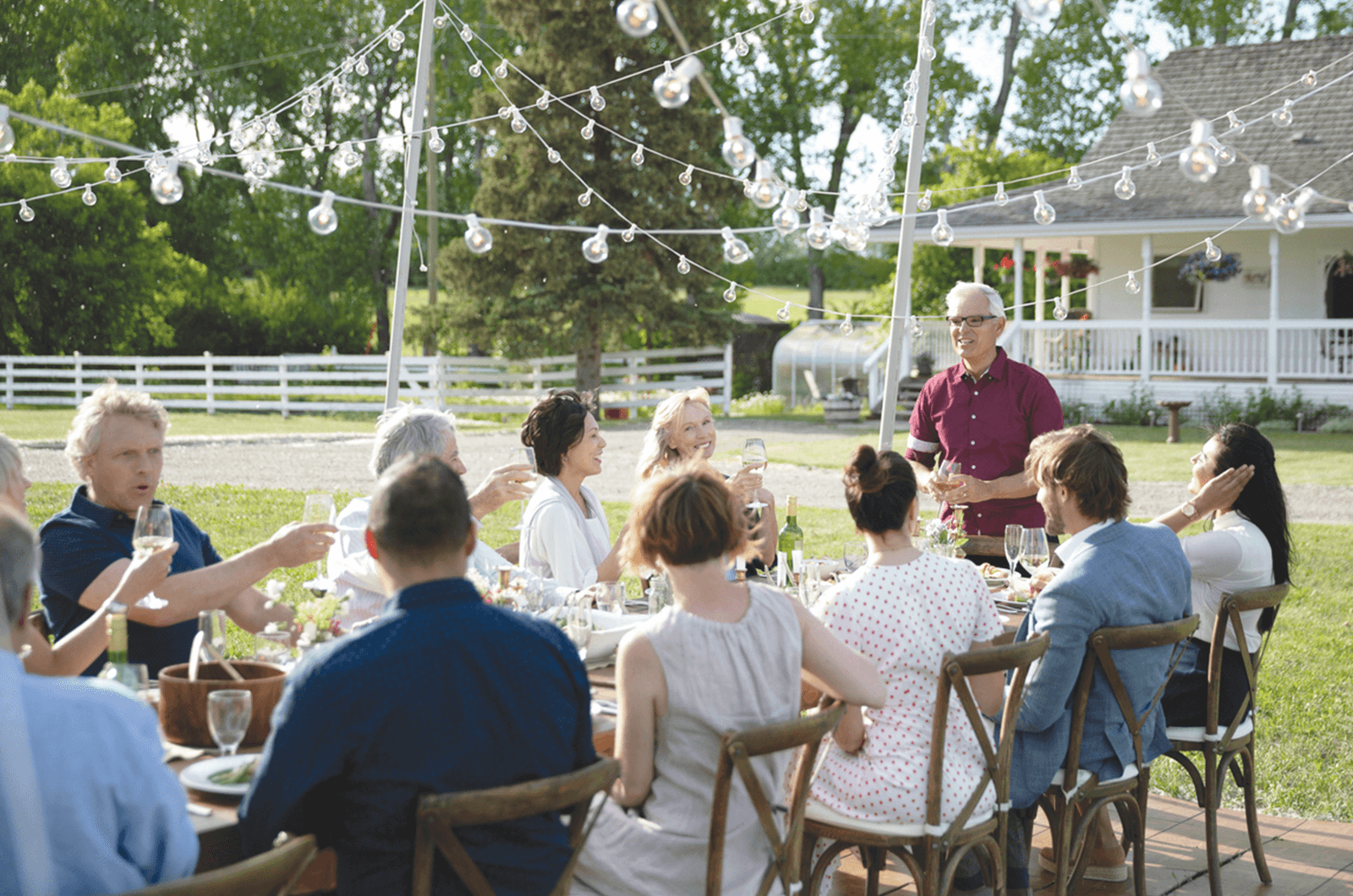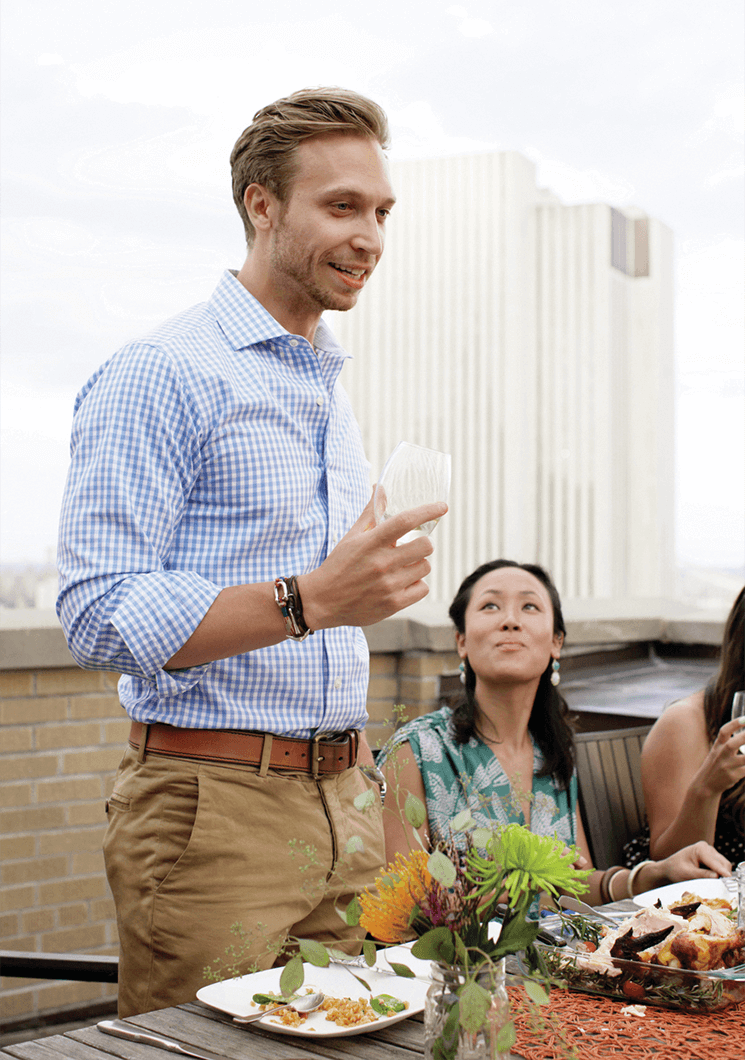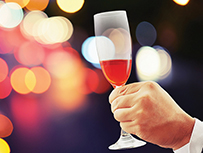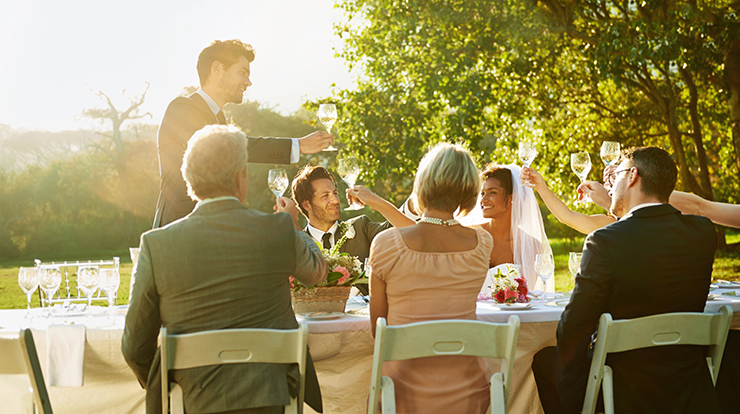
Last summer, I was enjoying a drink with friends while on holiday in the beautiful county of Cornwall in southwest England. We had clear skies (unusual for an English summer), a stunning sunset and all the children were safely stowed upstairs. It wasn’t long before someone raised a glass. “Cheers!” Clink, clink, clink. We promptly tucked into our meal, and the moment passed.
Most people are on autopilot when in “informal toasting mode.” Knowing the moment is ripe for a toast, they may say the right word or words, but without any forethought. In some cases, the clinking of glasses can feel almost transactional. There’s nothing wrong with a one-word toast, but by adding just a few more carefully chosen words, you can make even everyday occasions a little more special. The question is: How best to do it?
My evening sundowner with friends in Cornwall was just one example of countless millions of spontaneous, informal toasts that take place around the world. To clarify: toasting can be done with any beverage, even water! It’s not what’s in the glass that matters; It’s capturing a fleeting moment in time and celebrating it.
Occasion for such toasts include meet-ups with friends, having the in-laws over for dinner, a workplace team celebration or simply enjoying a restorative beverage at the end of the day with one’s husband, wife or significant other.
These everyday occasions may not be as prominent as a wedding-day spectacular, but they matter, nonetheless. “Informal toasts enhance the connection between the people present,” says Yo Tang, an international brand manager for a global beverages firm dealing in high-end spirits. Tang lives in London, but his work requires that he have a thorough understanding of toasting customs around the world. He says that wherever informal toasting is done, “it’s about celebrating good moments together.”
“Whether informal, formal or ceremonial, a toast represents a lighthearted and enjoyable way to celebrate our connection with others.”
What if we were to make these everyday occasions better through the power of language? Certainly, as Toastmasters, we have the training to make more of these precious moments of connection. These six tips can help.
Writing an Informal Toast:
Seize the right moment. An informal toast is most likely to resonate when the energy in the room is running high. This may well be early on, as soon as everyone has arrived and has been poured a drink. Equally, it might be toward the end, especially if there’s food involved. Be sensitive to the host if there is one; they may prefer to take the lead. Of course, toasting the generosity of your host or hostess is sure to connect with all who are present.
Have a single clear theme to your toast. Clarity is key. Just as you might do with a Table Topic, identify your theme and then commit to it.
Look for common ground. You don’t have to come up with something mind-blowingly original or sensational. A simple, clean acknowledgement of what people have in common will work well. “Tap into the emotion felt by the people present,” says Tang.
Mean what you say. The sincerity of your words counts for more than grammatical perfection. Many would say you should always have your toast written down. But this can be awkward or impossible if you’re speaking impromptu. It is far more important that the intentions behind your words are felt by those present. Syntactic slip-ups in such circumstances are easily forgiven. Just speak from the heart and be genuine.
Keep it brief. Enough said.
Consider having a T.I.M.P. (Toast In My Pocket). Great Table Topics speakers consciously build a library of material they can dip into when called on to speak. What if you were to apply the same approach to your toasting?
Michael Vanderosen, CC, a former Toastmasters division governor who works as a professional master of ceremonies, says having material at the ready is wise. Vanderosen has hosted galas and events all over the world, including military, state and royal ceremonies. “It’s worth having a ‘menu’ of common experiences or characteristics you can apply as appropriate to the occasion— profession, current location, age or interests,” he says.
Going Formal
Many occasions, of course, call for a formal toast: a wedding, a significant birthday or an official dinner, to name a few. “The very first thing I think of when I think of a toast is that the best man’s toast at a wedding is usually either a highly anticipated or highly dreaded moment,” says Katina Boetger-Hunter, ACS, ALB, member of the Beaver Club in Beaver Falls, Pennsylvania, U.S. As a two-time finalist in the Toastmasters World Championship of Public Speaking, Boetger-Hunter knows that a good formal toast can set the tone of an event—for better or worse.

“It’s vital that you research the occasion, the host family, the person to be toasted and any other guests or celebrities attending.”
—MICHAEL VANDEROSEN, CC,PROFESSIONAL EMCEE
Typically, toasts for such occasions are prepared in advance, scripted and take the form of a short speech, either early on or toward the end of proceedings. Formal toasts can be directed to someone who is present in the room or to a public fi gure who may not be present. There can also be a fair amount of etiquette to navigate. “It’s vital that you research the occasion, the host family, the person to be toasted and any other guests or celebrities attending. Plus, you must get people’s names and titles right!” says Vanderosen.
Here are three ways to craft formal toasts:
Prepare. Too many speakers “wing it” with their formal toasts, but this is risky. As Vanderosen advises, take your preparation seriously—details matter! Under these circumstances, writing your toast down in advance is a good idea.
Allow time for your audience to respond. So often, the vital words of a toast are drowned out by the sound of chairs being pushed back. Other times, audience members are distracted by the need to top up their glasses. Be crystal clear in your instructions and give the audience ample opportunity to get ready. Signal the need for people to fill their glasses early so it’s not all done at the last minute.
Be easy to echo. What are the precise words you want your audience to say during your toast? Think of the words as a brief quote: “Mr. and Mrs. X!,” “The Queen!” or “To friendship!”
Whatever the words or phrase may be, belt them out loudly and clearly so the audience has no doubt as to what they should say.
Whether informal, formal or ceremonial, a toast represents a lighthearted and enjoyable way to celebrate our connection with others. Spoken language, as it is in so much of life, is the key. So the next time you raise a glass, seize the moment and say a few words. After all, we’re Toastmasters!
Simon Bucknall is a speaking coach and facilitator based in London, England, and placed second in the 2017 World Championship of Public Speaking™. He was a presenter at both the 2020 International Convention and a Toastmasters webinar on public speaking. Visit www.simonbucknall.com.



 Previous
Previous
 10 REASONS TO RAISE A GLASS DURING ANY OCCASION
10 REASONS TO RAISE A GLASS DURING ANY OCCASION
 Previous Article
Previous Article

